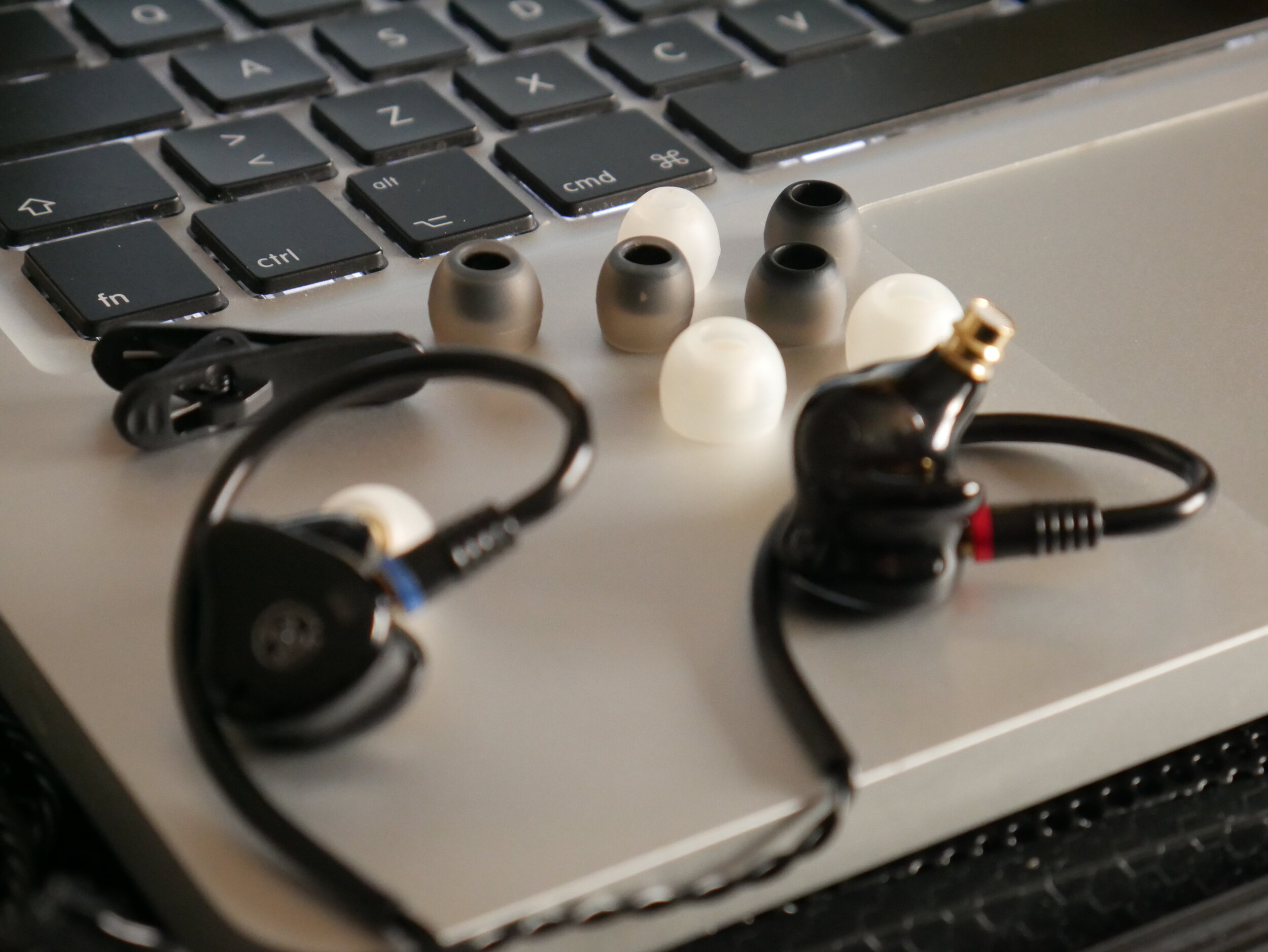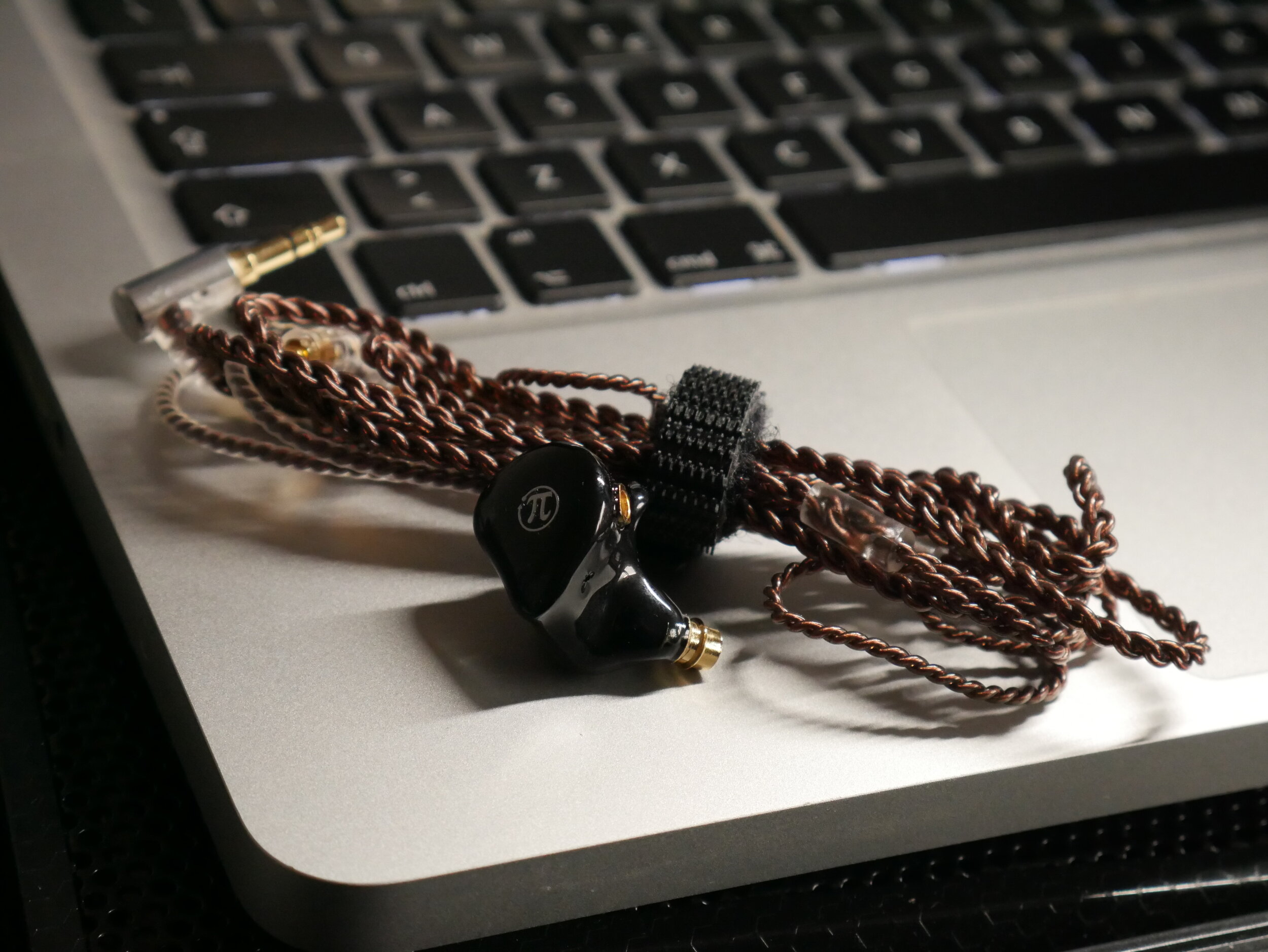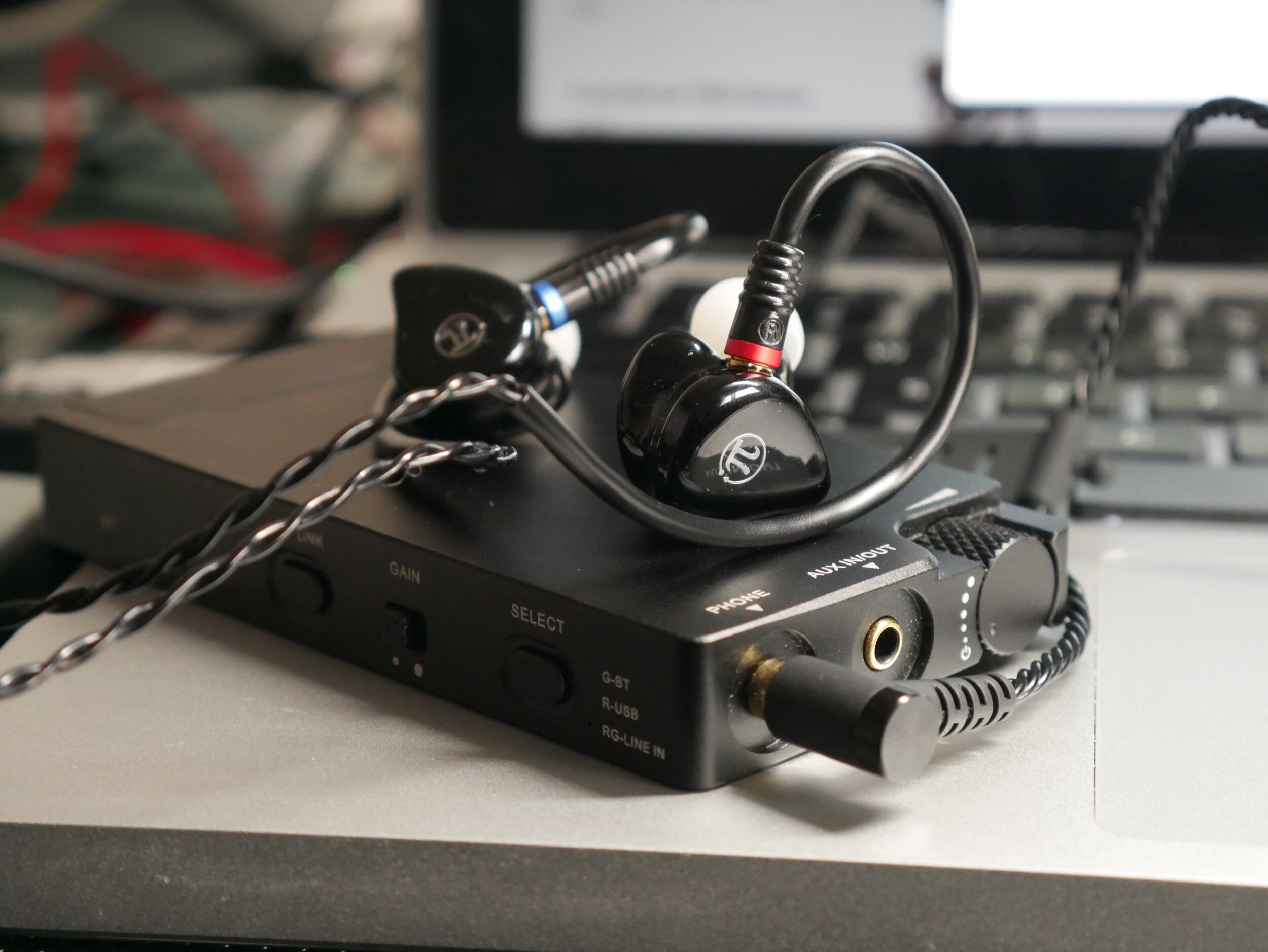Price: 45 - 49$
Where to buy: https://it.aliexpress.com/i/33000545131.html
Cable alone: https://aliexpi.com/V331
Specifications:
Frequency response: 20-20k Hz
Sensitivity: 110±2db
Impedance: 30 Ohm
Thanks to Pai Audio for the review sample.
Unboxing and first impressions
This is a simple but concrete package. A hard plastic box contains the IEMs, already attached to their cable, and some accessories, such as a clip and 4 pairs of ear tips (2 white, 2 gray). I really like the white tips, while I don’t love the cable, which I assume from the color to be made of copper. Because of the beautiful jet black finish of the buds, I decided to pair them with a FiiO black cable which is absolutely a great match. The DR2 are made of resin, poured around a single dynamic driver. The quality is magnificent, while the build has some flaws (for example, one of my buds has the driver protruding a little bit outside the shell. Not a big deal, for the price they are amazing. Nothing worse than the FiiO FA1 or the BGVP DM6 in terms of materials or connectors. And these cost less than 50$. The nozzle is made of metal and has a nice gold finish which looks great with this black color. There are also different colors to choose when you buy the DR2, which I also appreciate (like the bordeaux one). I would have appreciated a carrying case, because the plastic box in which these earphones come cannot replace it, but it’s a matter of a few bucks, so I’m good for the price. The fit is really good for my ears, I have no complains about it. It is better than the FiiO FA1, which have a slightly different shape, even though the concept is the same. I like the logo which is not low-key but it’s nice enough to show itself without looking ridiculous.
Sound
My sources: FiiO M7 (standalone; to XDUOO XP-2 via Bluetooth; to XP-2 via line-out; to TOPPING NX4 via line-out), Dodocool DA106 (mainly to XDUOO XP-2 via line-out); Mi MIX 2 to XP-2 (via Bluetooth and USB) and NX4 (USB), to Zorloo ZuperDAC-S, to Audirect Whistle; MacBook Pro 2012 to Focusrite 2i2.
My music: Jon Hopkins, “Singularity”; Billie Eilish, “When do we fall asleep, where do we go?”; Coldplay, “Ghost stories”; Bon Iver (Discography); Jack Garratt, “Phase”; Jamie Cullum, “Taller”; Sia, “Colour the small one”; The Bloody Beetroots & Jet, “The great electronic swindle”; Jacob Collier, “In my room” and “Djesse (Vol.1)”; John Coltrane, “Giant steps”; Lauv, “I met you when I was 18”, Oh Wonder (Discography), Radiohead (Discography), a lot of Mozart, ecc..
My files: MP3, M4A, FLAC, ALAC, few DSDs (Pink Floyd).
It’s pretty obvious that these IEMs haven’t got a reference tuning. This is fine, but I immediately have to say that I can’t recommend these to producers, because the sound coloring is intense here. If you are a stage performer, you won’t suffer that much.
Bass is prominent here: the sub is noteworthy and the mid is solid and punchy. This is a real dynamic driver bass. You’ll enjoy it with some Billie Eilish, believe me. I really like The Bloody Beetroots’ heavy bass tracks too, with the DR2. The tuning is cleverly done, so the midrange is not buried under the fat bass. However, it is clear that there’s a consistent V in the sound signature, so the overall volume of the mids is lower than the bass and the treble. This luckily won’t affect vocals that much, so while you hear a fun character, you won’t suffer of a sense of congestion. You may hear the V when listening to piano tracks (try with some Mozart, like his Rondos concertos for 2/3 pianos). It’s a natural sound, with a good instrumentation separation and a fair space for male and female vocals to shine. Treble is really nice: very detailed, open but controlled, vocals are airy and drums are pleasant. I’m very sensitive to treble, but I have nothing bad to say about this one. I think it has the right picks to give a perception of width, talking about space. I feel the stage is wider and deeper than average, which is something I don’t usually find in earphones of this price range. Imaging is good. I feel this product is very coherent about its signature and it’s really well-tuned. Honestly, a more famous brand could sell something like this for much more money. And this is a sign of how mature is the Chi-Fi market nowadays.
By using the grey ear tips, the sound gets less bassy and more balanced, while mantaining the same characteristics as using the white tips, such as good vocals, space and instrument separation. The issue is that one of the two pair of dark tips have a different size.
Comparisons
Tin HiFi T2: another dynamic, but a really different product. I prefer the sound of T2, with a way more controlled bass, more balance, more detail. However, the fit is better on the DR2, and if you like bass you’ll find the T2 lacking, while the DR2 have a strong one. T2 have better accessories and a lower price, but I think that you must choose because of the sound. One is more reference (T2) and the other is heavily V-shaped.
BLON BL-03: these have a similar bass, really solid and airy, while the signature is different. BL-03 are less fun, more balanced and even more coherent than the DR2, which sometimes exaggerate by coloring too much some areas. But I think they are absolutely comparable, not only for their price which is similar but also for the taste: if you like one, I may say you can appreciate the other. With the grey tips on the DR2, the sound become even more similar to the BLON’s.
ADVANCED Model 3: similar concept here. A dynamic driver which manages all the frequency range, MMCX, all-black design, a fun tuning. I’d rather the fit of the Model 3, but the tuning is more refined on the DR2, which are way less congested and widen the soundstage. I also think Pai Audio’s materials are better, so I believe they are more durable.
Conclusion
I absolutely recommend this set to the ones who love bass and do not need a reference pair of IEMs. For listening to music, it’s a very pleasant set, which colors some frequencies and really gives a tone to our favorite tracks. However, it’s not recommendable for mixing and mastering, because it’s far from being a flat monitor. For the price it is surprisingly lacking defects. I would love to see how Pai Audio’s premium IEMs perform, like the 8BA which would rival my AudioSense T800.
Pros
Fit
Materials
Ear tips
Fun tuning
Bass
Treble
Coherence
Cons
Cable could be better
Build is not the most refined


















































